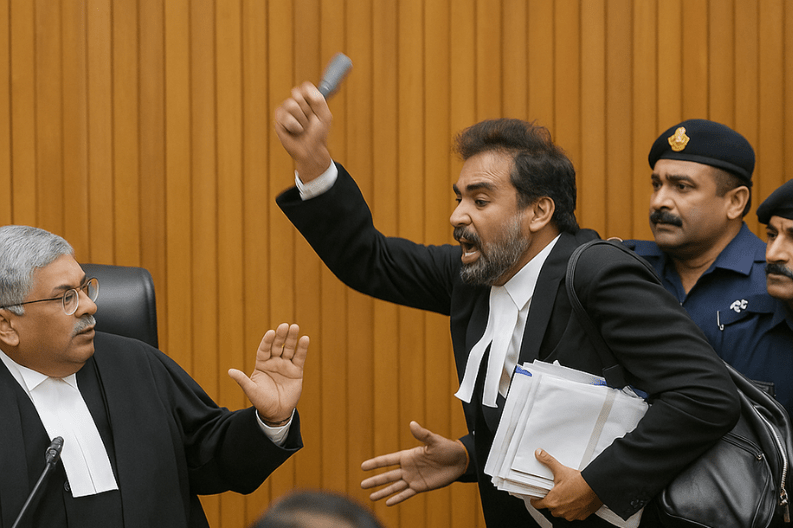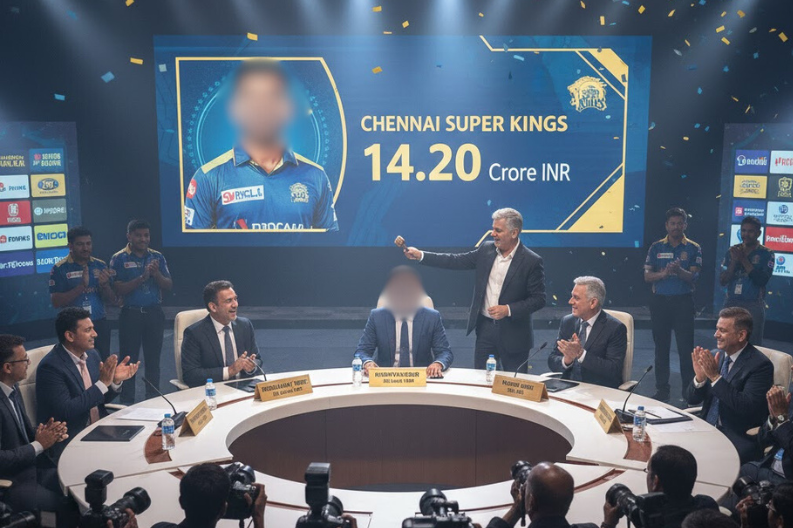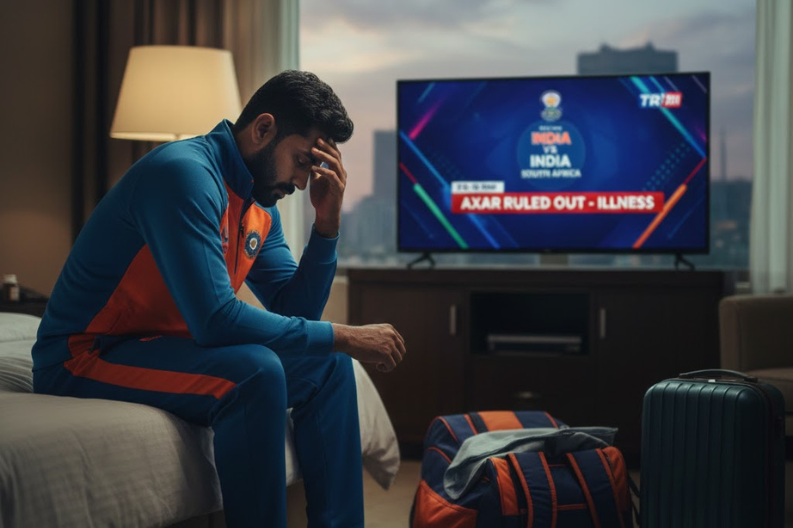The Lawyer attempts to attack Chief Justice incident stunned the Supreme Court of India on Monday morning. A lawyer suddenly tried to throw an object at Chief Justice BR Gavai inside Court Room 1, creating chaos and alarm. Fortunately, security officers reacted instantly and stopped him before anyone was hurt. The shocking event has raised serious questions about courtroom security and professional conduct.
Soon after the disturbance, police officers detained the lawyer for questioning. Senior officials, including the Deputy Commissioner of Police (DCP) for New Delhi and the DCP of the Supreme Court, joined the investigation. Witnesses said the lawyer shouted, “Hindustan will not tolerate insults to Sanatan,” as guards restrained him.
Before the attack, the lawyer appeared calm and behaved normally. He wore a formal black coat and carried a proximity card, a bag, and a rolled bundle of papers. Advocate Anas Tanwir, who was in the courtroom, shared details of the incident on social media.
When security escorted the lawyer out, he turned to Justice K. Vinod Chandran, who sat beside Chief Justice Gavai, and apologized. He claimed his actions were directed only at the Chief Justice and not at anyone else.
Former Supreme Court Bar Association Secretary Advocate Rohit Pandey condemned the act. “It is disgraceful that a lawyer attempted an assault inside the courtroom,” he said. “This behavior damages the dignity of the Bar and must face strict action.” Pandey added that the lawyer had earlier commented on a remark made by CJI Gavai during a temple-related case.
During that hearing, Chief Justice Gavai referred to a dispute over a Lord Vishnu idol. He suggested that the petitioner could simply pray to Lord Vishnu for relief, as the Supreme Court had no further role in the matter. The court clarified that the temple involved was already protected by the Archaeological Survey of India (ASI), which manages historic and religious sites nationwide, including in Punjab.
Following online criticism, CJI Gavai publicly stated that he respects every religion. Solicitor General Tushar Mehta, who was present in court, supported him. “I have known CJI Gavai for a decade,” Mehta said. “He visits temples and other religious places regularly. People should not jump to conclusions based on social media posts.”
The attack has reignited discussions about security in courtrooms and the standards of behavior expected from legal professionals. Experts stress that courtrooms must remain places of calm debate and respect. Aggression or violence, they say, undermines the dignity of the justice system and the faith people place in it.
The incident also reveals India’s ongoing struggle to balance faith, law, and public emotion. Punjab, for example, has a long history of both legal and religious importance. Figures such as Justice M.S. Liberhan, who led the Ayodhya Commission, have influenced how India handles sensitive cases tied to religion and heritage.
The Supreme Court of India, located in New Delhi, frequently hears cases involving temples, mosques, and protected heritage sites. These matters require judges to carefully balance religious freedom with cultural preservation. Events like Monday’s attack remind everyone that emotions must never overshadow respect for the law.
Legal experts now urge authorities to tighten courtroom security. They also recommend offering mental health and stress management programs for lawyers, who often face high-pressure situations. Ensuring calm and discipline in the courtroom, they say, is crucial for maintaining public confidence in the judiciary.
As the investigation continues, the police and legal community face pressure to prevent such incidents in the future. The Lawyer attempts to attack Chief Justice case stands as a strong reminder of the need for stricter courtroom safety and unwavering respect for India’s judicial institutions.



